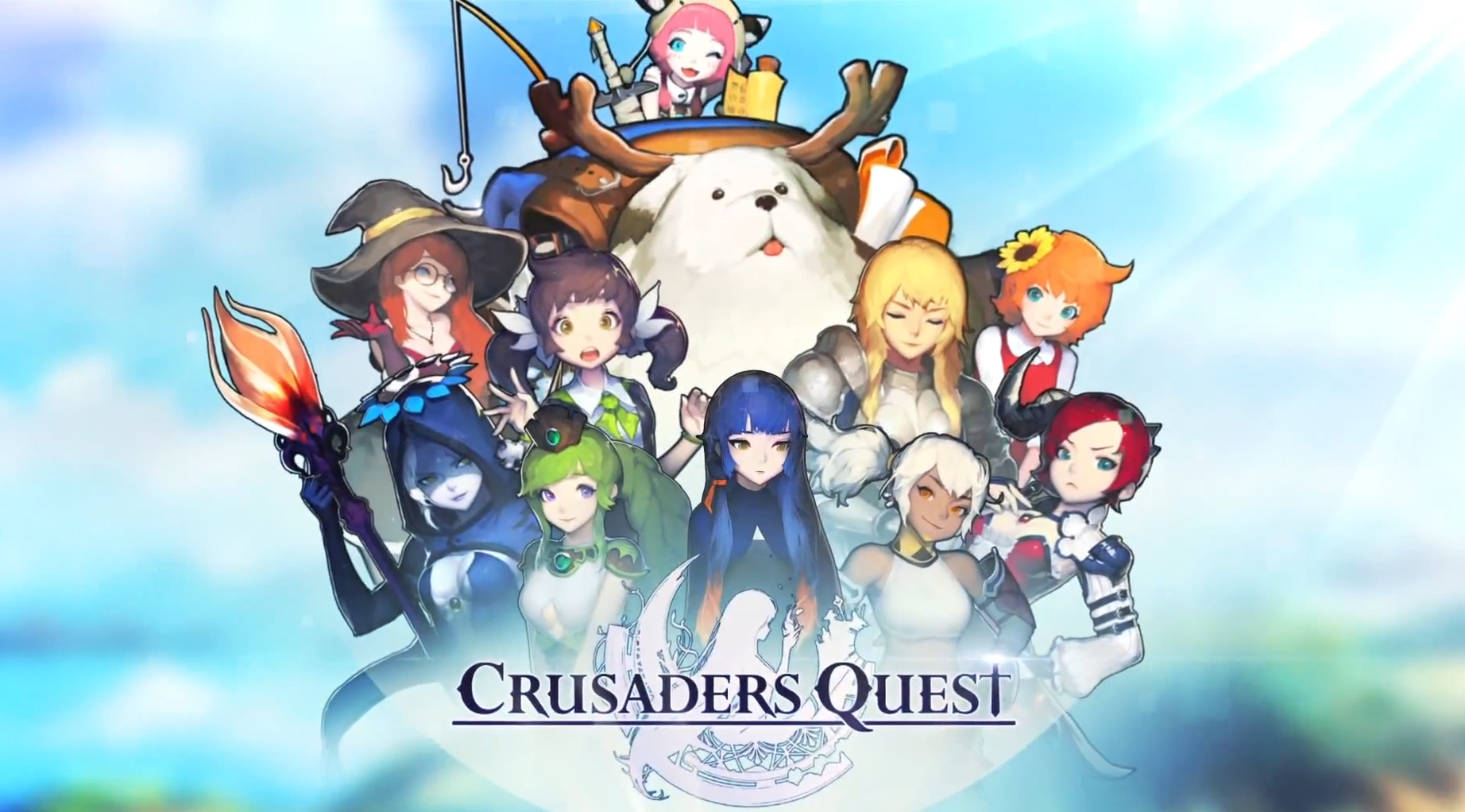
Crusaders Quest is a mobile game based on a ‘freemium’ price model. The user can use up to three ‘heroes’ to battle and complete stages, unlock more stories/cutscenes, and acquire more powerful heroes and equipment.
The combat of the game is an innovation upon the classic match-3 genre. Instead of a 2D array of blocks, there is only a single array of block. Each hero generates their own block, and players click on the blocks to activate them – unleashing their respective powers. A maximum of 3 blocks can be activated at a time, and the damage/effectiveness of the skills scale with the number of blocks activated.
The Elemental Tetrad
Of the four elements, the mechanics tetrad stands out the most to me. The game innovates upon match-3 games like Candy Crush, to incorporate puzzle solving to the act. Thus, I found the mechanics easy to learn. However, the game shakes things up by incorporating the skills of the heroes to the activation of the blocks. I have to constantly make meaningful decisions in combat, like deciding if I should activate the current 2-chain, or wait for another block to appear for the strongest attack.
The aesthetics of the game is also very appealing. Although it is done with pixel-art, and lack fidelity, the artists have kept the style consistent for the game to be visually appealing. For the technology tetrad, it can be said that the platform (touchscreen mobile) of the game suits the mechanics very well. Tapping the screen to activate the blocks is very intuitive for me. The story tetrad also somewhat applies to the game, as there are some cutscenes and story progression in the game.
Lens 21 – The Lens of Goals (+ Flow)
The goal of the game is quite straightforward – to get the strongest heroes and equipment, and form the strongest team. To do this, I participate in combat, through storyline stages or player-versus-player arenas. This way, I can earn resources to spend on upgrading or purchasing new heroes. The smaller game loop, the combat itself, is even more straightfoward. Simply solve the match-3 puzzles to unleash your heroes’ attacks, and whittle the health of the enemies to defeat them. I find it very easy to get into the flow – the stages are easily accessible, and upon completing the stages, I return to the ‘town’ to look at the rewards, and start a new stage.
Lens 36 – The Lens of Chance
Acquiring heroes is tedious process in this game – through random ‘rolls’, something like opening card packs in Trading Card Games. To acquire a new hero, players must buy items called ‘Contracts’, through in-game currency or real money. Each Contract will award the player with a random hero, and sometimes even their strongest variants. It should be noted that players can also train their weak heroes and ‘promote’ them into their stronger variants, but it takes a considerable amount of time and resources. Thus, the game is balanced in the sense that power can be acquired through luck, or can be ‘grinded’. I find that opening contracts to get random heroes also makes the game exciting, as it allows me to take interesting risks to acquire strong heroes.
Lens 39 – The Lens of Meaningful Choices
As I can choose up to three heroes to form a party, I am forced to make meaningful decisions on the team composition. Should I slot in a healer to keep the team alive? Or will I rather fill that slot with an offensive character, to kill the enemies before the team takes substantial damage? These choices push me to strategize and exploit the strength and synergies of the different heroes. I also like that the developer also actively seeks dominant strategies (overpowered team compositions), and tweaks them to be balanced – to keep the game fun and choices meaningful.

Lens 34 – The Lens of Skill
Combat in the game consists mainly of solving puzzles, through tapping the blocks match-3 style. Different team compositions also require different strategies of activating the blocks. For example, some skills will weaken the defenses of the enemy, allowing me to activate my strongest offensive-type attack after that for maximum impact. As I play, I get more used to the playstyle of my current team, allowing me to exploit more of their strengths. This way, I have the feeling that I have gained more mastery of the game.
Lens 34 – The Lens of Emergence
Each hero in the game has its own unique skills and abilities. I find that this adds a very interesting depth to the gameplay, as it allows me to discover emergent gameplay. For example, there is a hero who can keep one other hero alive no matter how much damage that hero takes. I paired this hero with a tank, who could redirect all damage from the team to it, effectively creating an unkillable team as long as these combo was upkept.
































